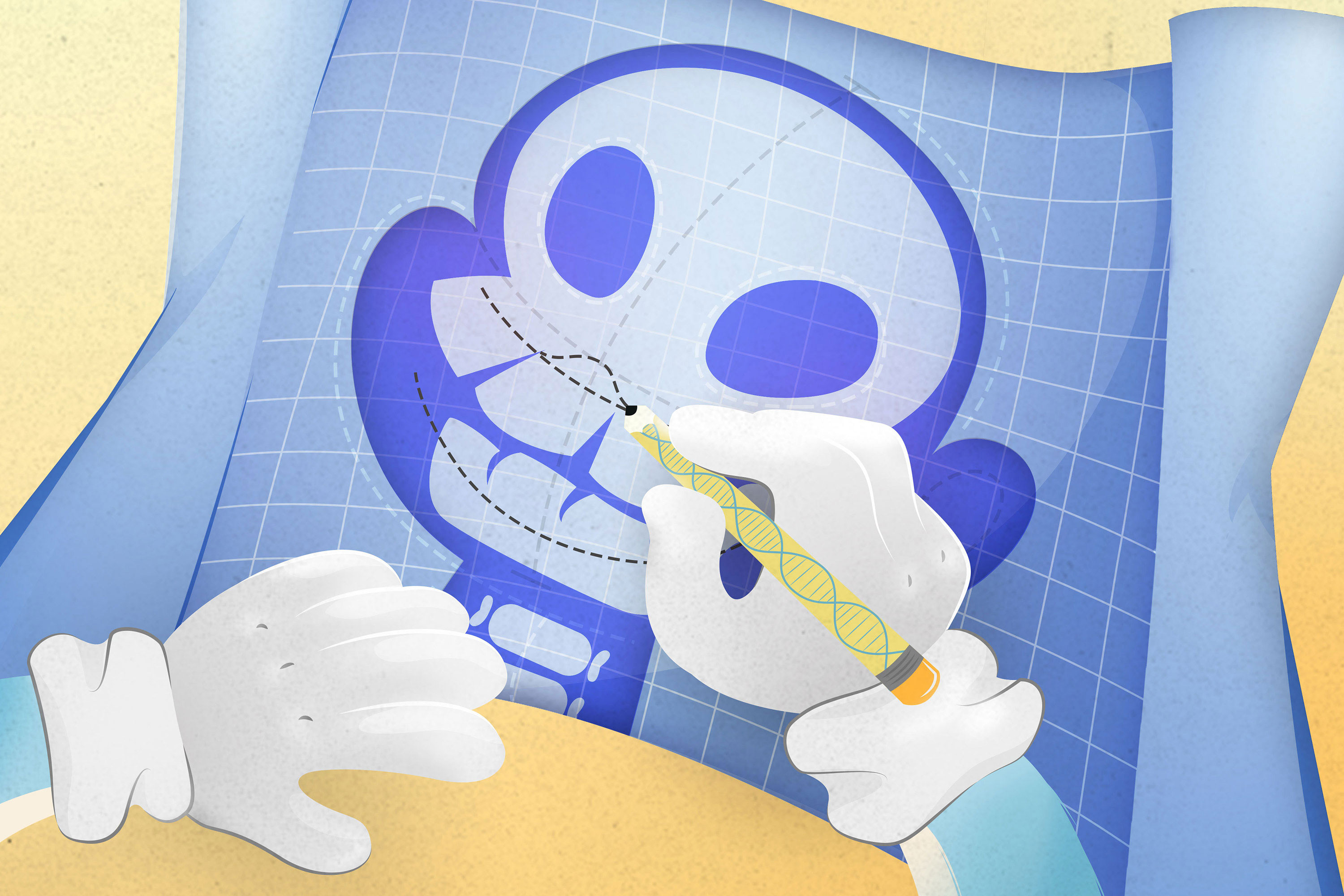Once upon a time in Europe, pregnant women avoided rabbits to prevent their babies from being born with a “harelip.” But, that apparently isn’t the only misconception about the condition now known as cleft lip.
In the May 1 issue of Cell Reports, UConn Health researchers report the popular modern belief that the condition is caused by a gene is, in fact, not the case at all.
Their research could transform how we understand the formation of the face.

Clefts of the mouth and face affect up to 1 in 500 people, making it one of the most common birth defects. Sometimes the cleft is just a small indentation of a person’s lip, while in other cases the cleft splits deeply into the lip, upper palate and even the nose. And most of the time, a person with a cleft has no other malformations of the bones or other organs.
A few genes have been associated with facial clefts, but they account for only a very small number of cases.
“They’re not like other disorders caused by mutation in a gene. Generally those are syndromes, affecting multiple organ systems. In most clefting cases, there is nothing else wrong,” says Justin Cotney, an assistant professor of genetics and genome sciences at UConn Health. He studies the human genome, but not the genes that tell the body what proteins to make. Instead, he focuses on regulators, parts of the DNA that tell genes when and where to act. These regulators, also known as enhancers, tend to be linked to specific parts of the body.
“We thought clefting cases might be frequently caused by a disruption of one of these regulatory pieces of DNA,” Cotney says. Enhancers are still poorly understood. They are located throughout the genome and it is often unclear which genes they control, potentially over very long distances. “Even though we have the whole human genome sequence, identifying enhancers and understanding what they do is akin to trying to work from a map written in an alien language,” he says.
Cotney’s lab has now begun to decipher that map.
The researchers examined tissue from human facial development in the very early stages, just four to eight weeks after conception. The human face doesn’t look like much at that point, just a collection of folds and bulges, but these structures have vital jobs to do. If they do not move and fuse at the proper time in development, clefts can occur. To identify enhancers that might be regulating these processes, Cotney’s team used molecular tags that identify active pieces of DNA. Then they compared their map to previous researchers’ work to figure out which of these active DNA sequences were shared with other tissues, and which were specifically active during facial development. These face-specific enhancers, Cotney and his team believe, contribute to many cases of cleft palate. If these enhancers are deleted, or turn on in the wrong place or the wrong time, the folds and bulges of the early face may grow in the wrong direction, or fuse together too early or not at all.
In their paper, the researchers were able to home in on enhancers that, when deleted, are likely to cause Van Buchem Disease, a severe bone thickening disorder, or Pierre Robin Syndrome, a collection of craniofacial abnormalities including clefting. In all, Cotney’s team found thousands of previously unknown enhancers that are likely involved in building the skull and the face. They go on to show that these enhancers are more common near parts of our DNA previously associated with clefting as well as normal differences in the way human faces look.
They call their map and data collection the “Human Craniofacial Epigenetic Atlas,” and they’ve posted it publicly.
“We’ve found a large amount of the regulatory architecture for craniofacial development,” Cotney says. “Now we can begin to understand which variants in our genome are likely to contribute to craniofacial abnormalities. In the future, we hope these annotations will help scientists to develop targeted therapies to correct or prevent these defects during pregnancy.”
Funding for this work was provided by the National Institute of Dental and Craniofacial Research.



